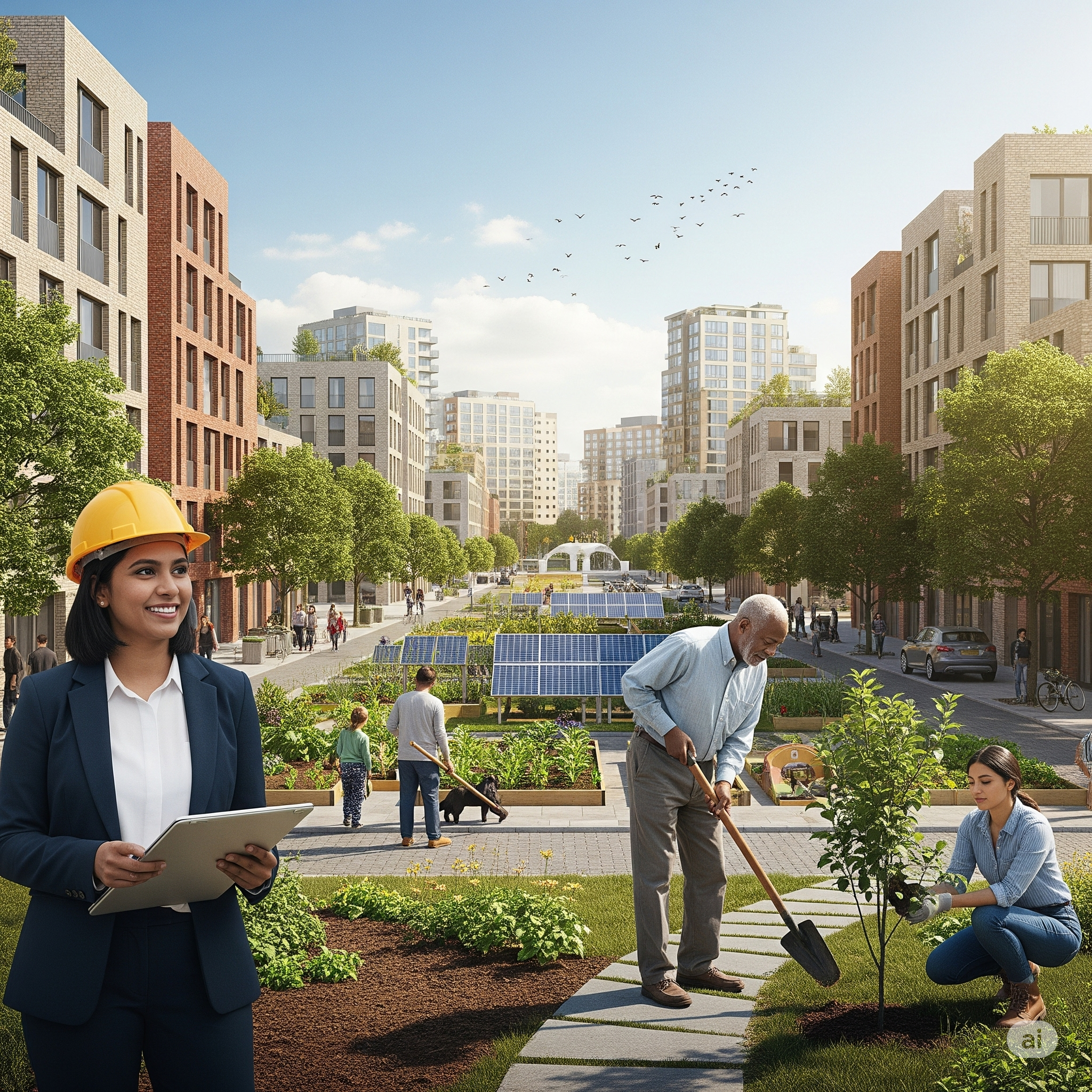Housing is more than a roof over one’s head it’s a foundation for dignity, health, education, and economic opportunity. As cities across the world continue to grow rapidly, the need for inclusive, safe, resilient, and sustainable urban development has never been more urgent.
Over the past two decades, the international community has responded to this challenge through frameworks such as the Millennium Development Goals (MDGs) and the Sustainable Development Goals (SDGs), both of which place housing and urban development at the core of human progress.
In Kenya and other developing countries, aligning national housing and urban policies with these global goals offers an opportunity to tackle slums, promote inclusive growth, and address the multiple dimensions of poverty.
The Millennium Development Goals and Urban Housing
Launched in 2000 with a 2015 target, the MDGs were the first global effort to set time-bound targets for poverty reduction, health, education, gender equality, and environmental sustainability. While only one of the eight MDGs directly mentioned housing and urban issues, the ripple effects of improved shelter were recognized across all goals.
MDG 7: Ensure Environmental Sustainability
Target 7.D aimed to achieve significant improvement in the lives of at least 100 million slum dwellers by 2020. This was the only MDG that explicitly addressed urban conditions, acknowledging the growth of informal settlements and their associated challenges such as poor sanitation, overcrowding, and insecure tenure.
While progress was made globally (with around 200 million people benefitting from improved housing conditions), slum growth outpaced improvement. In Kenya, cities like Nairobi, Kisumu, and Mombasa saw expanded informal settlements like Kibera, Mathare, and Bangladesh slums highlighting the need for stronger housing policies.
Transition to the Sustainable Development Goals (SDGs)
In 2015, the MDGs were succeeded by the SDGs, which expanded from 8 to 17 goals and took a more comprehensive and integrated approach to global development. Urban housing and development now featured prominently in this new framework.
SDG 11: Make cities and human settlements inclusive, safe, resilient, and sustainable
This goal reflects a paradigm shift recognizing that sustainable development is impossible without addressing the urbanization challenge. Key targets include:
- 11.1: By 2030, ensure access for all to adequate, safe, and affordable housing and basic services and upgrade slums.
- 11.3: Enhance inclusive and sustainable urbanization and capacity for participatory, integrated, and sustainable human settlement planning.
- 11.5: Reduce the number of people affected by disasters, particularly the poor and vulnerable in informal settlements.
- 11.A & 11.C: Support positive economic, social, and environmental links between urban and rural areas and promote sustainable building practices.
Kenya’s Response and Urban Development Goals
Kenya’s housing and urban development agenda has been shaped by both domestic needs and international commitments. The government’s key initiatives reflect an alignment with SDG principles:
1. Kenya Vision 2030
This long-term development plan emphasizes urban renewal, upgrading slums, and delivering at least 200,000 housing units annually. It aligns with SDG 11 through projects focused on smart cities, improved infrastructure, and better urban governance.
2. Affordable Housing Programme (AHP)
Under the Big Four Agenda, the AHP aims to deliver half a million affordable housing units across the country. The program incorporates inclusive financing models, public-private partnerships (PPPs), and subsidies to make homes accessible to low- and middle-income earners.
3. National Urban Development Policy (NUDP)
This framework guides urban growth and land use planning, supporting compact, walkable, and environmentally sustainable cities. It echoes SDG 11.3 on inclusive urban planning.
4. Slum Upgrading Initiatives
Programs such as KENSUP (Kenya Slum Upgrading Programme) and KISIP (Kenya Informal Settlements Improvement Project) have targeted infrastructure improvement, secure land tenure, and sanitation in major urban settlements.
Key Challenges in Meeting Global Housing Targets
Despite these efforts, several obstacles continue to hinder progress in both Kenya and other developing nations:
- Rapid Urbanization
Urban populations are growing faster than housing supply, leading to overcrowding, land pressure, and increased informal settlements. - Housing Affordability
Even with government subsidies, formal housing remains unaffordable to a large segment of the population. - Land Tenure Issues
Land ownership in urban areas is complicated by informal claims, corruption, and legal disputes—slowing down development and upgrading efforts. - Inadequate Infrastructure
Housing projects without proper roads, water, sewage, and electricity often replicate the same problems they seek to solve. - Limited Participatory Planning
Inclusive planning processes remain weak, leading to solutions that don’t always reflect community needs and priorities.
The Role of International Partnerships
To meet the SDG targets, collaboration with international bodies has become critical. Organizations such as UN-Habitat, World Bank, and USAID have supported Kenya through technical assistance, grants, and policy development in areas like:
- Pro-poor housing finance and mortgage systems.
- Development of spatial planning tools.
- Research and data collection on urban poverty and housing needs.
- Promotion of climate-resilient and green building practices.
The Way Forward: A Rights-Based, Inclusive Housing Approach
As the 2030 deadline approaches, governments are under increasing pressure to deliver sustainable housing solutions. The future of urban development depends on a shift toward:
- Rights-Based Housing Policies: Recognizing housing as a basic human right, not a commodity.
- Incremental Housing: Supporting families to build homes over time through secure land tenure and basic infrastructure.
- Mixed-Income Neighborhoods: Avoiding urban segregation and promoting social integration.
- Smart Urban Planning: Incorporating data, GIS, and digital platforms for efficient service delivery and transparent land use.
The evolution from the MDGs to the SDGs reflects a growing global consensus that housing and urban development are central to sustainable development. In Kenya, this vision is echoed through national strategies and housing programs that aim to reduce slums, expand access to affordable homes, and promote inclusive urban growth.
Still, reaching these goals will require commitment from all stakeholders government, private sector, civil society, and communities. By aligning local housing efforts with global goals, we can build cities that are not only prosperous but also humane, just, and sustainable for future generations.

